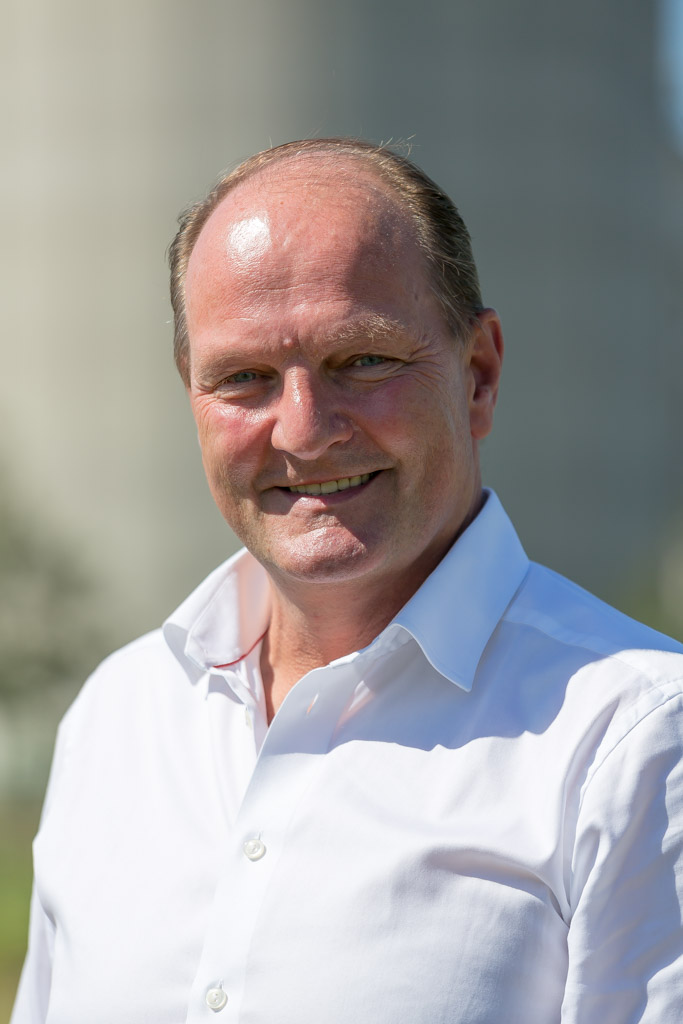This summer, construction will start on an installation that produces hydrogen from digestate and sewage sludge. Without using fossil fuels or electrolysers. “We are going to show that green hydrogen can really be green and cheaper,” says managing director Bob Busser.
The Dutch government wants to make the energy supply more sustainable and replace the industrial use of natural gas with hydrogen. A nice, but almost impossible goal if you ask Bob Busser. “At least, if you want to generate hydrogen exclusively with electricity. With wind and sun, uncontrolled amounts of electricity enter the grid, which means that sometimes there is too much and sometimes too little. In addition, transport is a major challenge due to grid congestion. This will take at least another ten years. This means that there is insufficient electricity available to produce hydrogen and that hydrogen is expensive.”
Hynoca (HYdrogen NO CArbon) shows that it can be done differently. The company will use biomass to produce hydrogen. And no, they will not cut down trees for that. Busser: “We are looking at biomass that has no other useful application.”

Hynoca has two residual flows in mind for the factory in Alkmaar: digestate and sewage sludge that is dried and processed into pellets at waste processor HVC. The technology that Hynoca has developed ensures that used biomass is split into a gaseous and a solid fraction in a first step. The gaseous fraction is cleaned in a number of steps. This produces a special syngas, because the carbon has been removed from the gas as a solid fraction.
Busser: "The syngas therefore has a much higher hydrogen component than normal syngas. If we purify it further, so-called fuel grade hydrogen. There are other possibilities. In the US we are working with LanzaJet to come to SAF (sustainable aviation fuel), a kind of biological kerosene. But that requires much larger volumes than what we are going to produce in Alkmaar. The industry can also use the syngas directly.”
The solid fraction is called biochar and it contains a lot of carbon. “The biochar cannot react with oxygen for up to a hundred years, which means it cannot convert into CO2,” Busser explains. He sees applications mainly in agriculture. “The carbon makes the soil more airy and retains moisture in the higher soil layers, which means less leaching of nutrients. In addition, the carbon is porous and provides housing for micro-organisms, which has a positive effect on root growth.”
Capturing carbon in the soil has (voluntary) carbon credits as a by-catch. “Independent research (Carbon Life Cycle) shows that we prevent 12 kg of CO2 emissions by producing 1 kg of hydrogen. For comparison: producing hydrogen with an electrolyser causes 2 kg of CO2 emissions per kg of hydrogen. And that is with 100% of green electricity.”
Construction of the installation in Alkmaar is expected to start next summer and production will start a year later. The aim is to produce 30 kg of hydrogen per hour. "These are relatively small quantities," Busser agrees. "But with this project we mainly want to show the potential of this technology and that we can produce hydrogen more cheaply than with electrolysers."

Hynoca will initially start with waste wood. This has already gained considerable experience in France, which, according to Busser, will help to start up the installation in a predictable manner. Once the production process is stable, the switch will be made to digestate and sewage sludge. There are also contacts for the use of other residual flows, such as bulb waste and roadside grass. "The region offers a wealth of opportunities to process local waste flows," Busser knows.
Hynoca supplies part of the hydrogen to the adjacent NXT filling station. The rest goes to two other customers by tube trailers. The factory that Hynoca is going to build in Alkmaar is part of the European REFORMERS program. The aim of this program is to realize a smart energy hub that makes it possible to provide customers with sufficient energy using less energy. “Hydrogen is part of that. With our hydrogen and the related CO2 savings, we will help make this project energy neutral.”
Header photo: A delegation from REFORMERS visiting the Hynoca project in France.